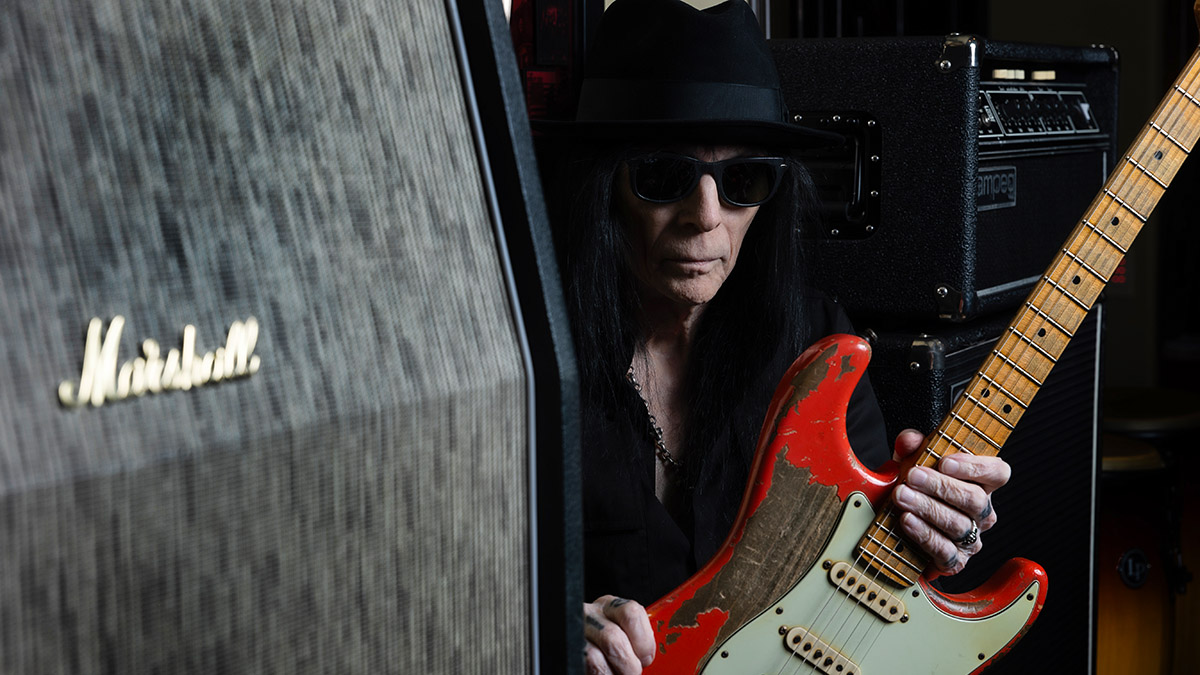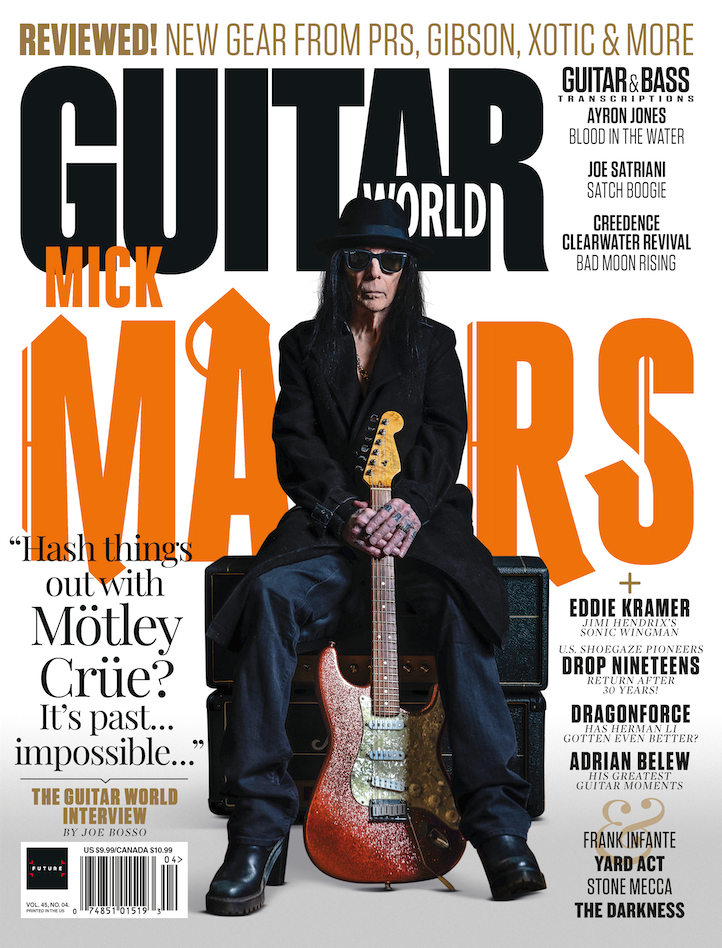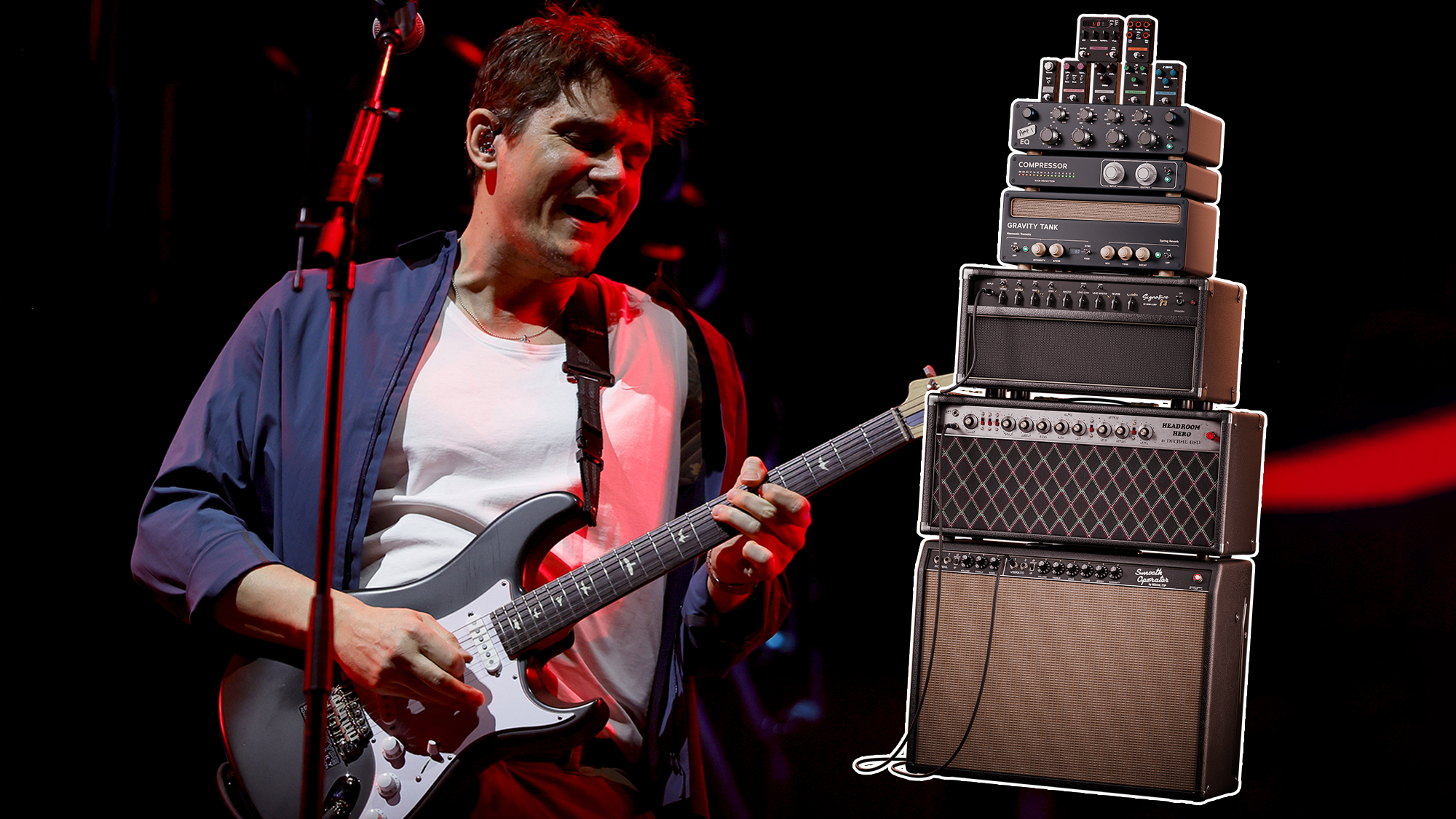“I had to step away from the pointy era. I chose the Strat because I like the way they look and the way they sound… everything about them is me”: Mick Mars on how he found his thrill with the Fender Stratocaster – and the 1954 unicorn that broke his heart
The former Mötley Crüe guitarist pays tribute to the most important Strats in his life, their essential mods, and why he had to step away from the pointy guitars crazy of the '80s

Here at GW, we’ve been celebrating 70 years of the Fender Stratocaster by seeking out Strat-playing cover stars from over the years to talk about their association with Leo Fender’s iconic electric guitar design – and to talk about the Strats that have graced our cover.
When Mick Mars appeared on the cover of the April 2024 issue, his first in-depth interview after his exit from Mötley Crüe, he of course brought a Strat. But this was a ’96 Strat in Sparkle Pink. Where was Isabella? Well, as Mars explains, he wanted to show us something different…
How did you obtain this Strat? It’s certainly different from your typical choices.
“Yeah, the pink champagne. [Laughs] I bought it from a friend of mine. He has a vintage guitar place. His name is Lloyd; I can’t remember his last name at the moment. I called him and [said] I wanted some pink sparkle guitars. That particular Strat happened to be one of them. It is really an eye-grabber for sure.”
You’re usually seen playing your worn-looking white Strat. Why did you choose a pink sparkle one?
“You know, that one right there, the white one, good lord, I bought before they even started coming out with the aged Stratocasters; I had my own aged [one]. But I don’t know… I just liked the pink one. I think it’s a 1996, though I’m not positive. But I think it’s a ’96, and it came like it is.”

Have you modified the pink sparkle Strat at all?
All the latest guitar news, interviews, lessons, reviews, deals and more, direct to your inbox!
“I did put a Seymour Duncan in the bridge [position].”
What do you like about the Seymour Duncan electric guitar pickup in a Strat?
“The [Seymour Duncan] has a bit more output; I think a standard Strat [pickup] has a 5.6, or even a 5 ohm. Seymour’s have like a normal humbucker [sound], which is like around 7.5 or 8 [ohms]. I wanted a little more power in the back to make less treble and top end and still sound even.”
Did the pink sparkle Strat make it onto your new record?
“Actually, no. But I did use it in a lot of photos [Laughs], and I’ve played it to write songs and stuff, but it didn’t end up on any of the songs. [It was] mostly the normal, beat-up white one that I have, Isabella. That’s the one I used the most.”
You’ve had Isabella for a long time and have been seen mostly with it. How did you acquire it?
“It came from Fender, actually. I had an endorsement with them, so I would normally get a couple of guitars through the endorsement thing. That’s where that one came in; it was in one of the first bunches, and again, I changed the pickup on it to the one I used, which was 16 ohms, not 8. I’m overkill on everything, I guess. [Laughs]
“But that guitar sounds different from any of the other guitars I have. Maybe that particular guitar has a bit more of the lower midrange, which is what I like – lower mid-range and higher highs to give it a distinctive sound. You know, it’s a real player. You can tell by how beat up it is.”
To come out with a pink Strat, I’m sure a lot of people would expect to see my white one out there. But yeah, I threw that one in to give them a curveball
How does the pink sparkle Strat from the GW cover compare to your trusty white Strat?
“The sparkle one has less output, of course. Like I said, it’s about 8 ohms, but it also has a rosewood neck, which makes the guitar sound warmer. A maple neck like Isabella’s gives it more of an edge – a brighter, edgier sound.”
What drew you to Strats in the ’80s, a time when most people weren’t really using them aside from you and maybe a few others?
“That’s exactly right. Nobody was playing them except me! [Laughs] I like to… I don’t know… step out of the thing. It’s like, ‘He’s playing blah, blah, blah,’ and, ‘He’s playing all the pointy, sharp guitars.’ I wanted to, of course, take a Strat. I played a Tele for a while, but I loved Strats forever, and I had to step away from the pointy era. [Laughs]”
Given your history with your white Strat, why did you choose the pink sparkle Strat for your GW cover shoot?
“I thought it jumped. I thought it was, like, a cool thing, and a lot different. For me, anyway, to come out with a pink Strat, I’m sure a lot of people would expect to see my white one out there. But yeah, I threw that one in to give them a curveball.”
It’s safe to assume you still own this guitar. Have you ever played it live?
“No. That one has not seen the road. I have a couple other sparkle ones – a purple sparkle and a gold sparkle. They saw the road once on the final tour – well, not the final tour, but the last stadium tour that we did when I was in Mötley [Crüe].”
I chose the Strat because I just like ’em. I like the way they look; I like the way they sound; everything about them is me
What does the Strat mean to you?
“It’s a very iconic guitar. I chose the Strat because I just like ’em. I like the way they look; I like the way they sound; everything about them is me. One of my first real guitars I had was a 1954 Stratocaster ’burst. They had two-tone ’bursts, more like a tobacco ’burst thing, and I got that in high school from a friend.
“He gave it to me because he really liked the way I play guitar, and he didn’t play, so he gave it to me. The serial number, I remember, [was] 0140, and I wish I still had that thing. I kick myself in the butt all the time; that was actually the very first Strat I had. And it was a very low serial number!”
Andrew Daly is an iced-coffee-addicted, oddball Telecaster-playing, alfredo pasta-loving journalist from Long Island, NY, who, in addition to being a contributing writer for Guitar World, scribes for Bass Player, Guitar Player, Guitarist, and MusicRadar. Andrew has interviewed favorites like Ace Frehley, Johnny Marr, Vito Bratta, Bruce Kulick, Joe Perry, Brad Whitford, Tom Morello, Rich Robinson, and Paul Stanley, while his all-time favorite (rhythm player), Keith Richards, continues to elude him.



